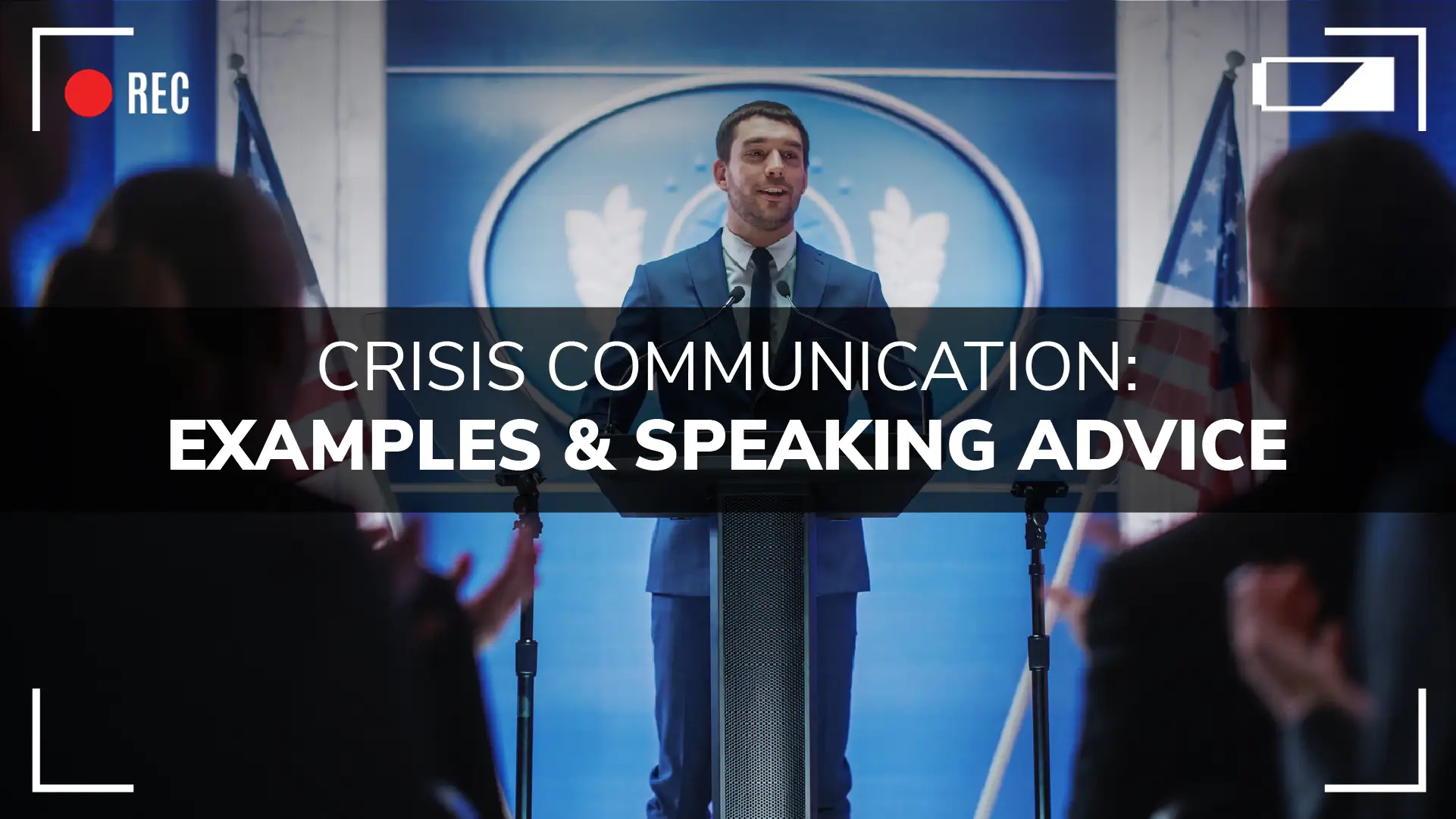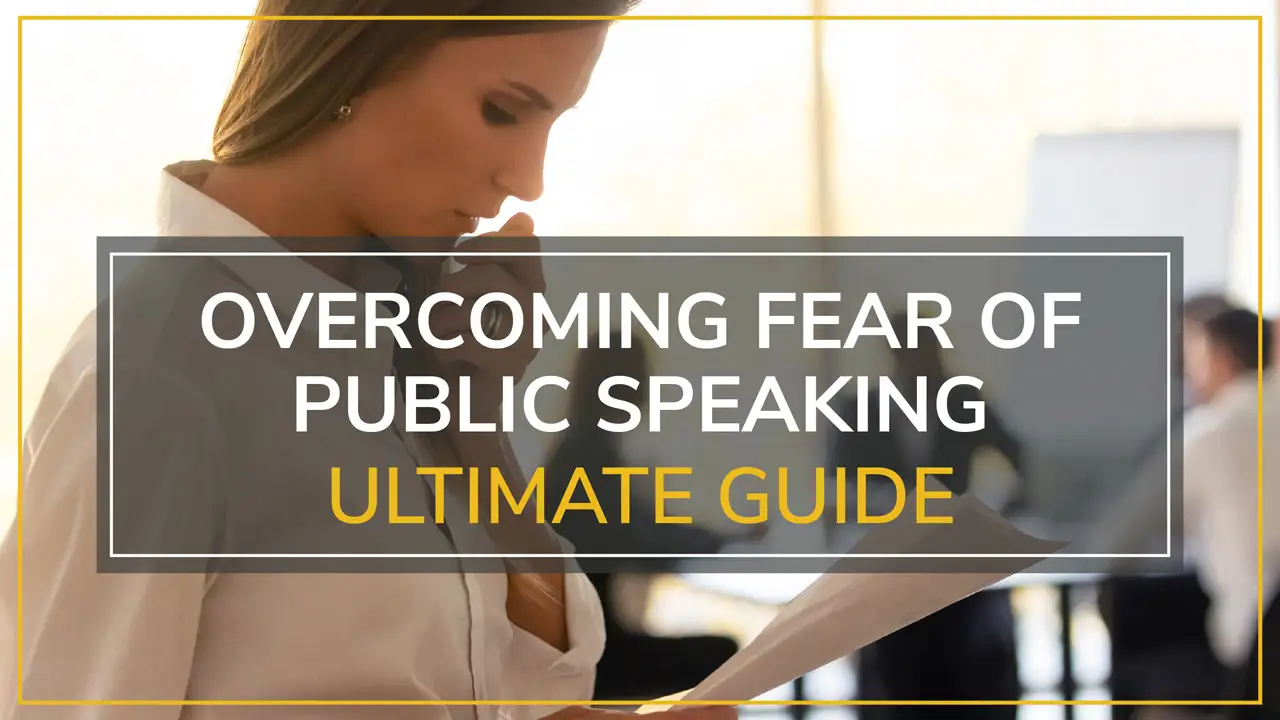A single crisis can wipe out an entire company—if handled poorly.
On the plus side, a calm, measured response can not only save you and your business’s reputation, it can sometimes even improve how the public sees you.
But because a crisis almost always appears in a flash, a swift response is essential to prevent or at least minimize loss of profits, increased litigation, job loss, injured employee morale, a ruined reputation, lower momentum as a competitor, increased government intervention, increased consumer activism, a loss of trust in management—you get the picture.
Welcome to the world of crisis communication. Your limits as a public speaker will be tested here.
We’ll show you the how-to, and then we’ll show you some crisis communication examples.
Table of Contents
ToggleWhat is a Crisis Communication Plan?
Unlike a business continuity plan, a crisis communication plan maps out what will be communicated to those who are affected by the crisis, including employees, their families, stakeholders, and members of the media.
The plan should be simple. Emotions will be running high and most of the people involved will be out of their element, so strive for a plan that is concise and easy to understand.
How Do You Present Yourself To The Media During a Crisis?
If you’re the one appearing before a swarm of cameras and microphones regarding the crisis, the real finesse of any media training you may have received will come to the fore here.
How to Ditch The Nerves
Recent times have downgraded how some leaders attempt crisis control to the level of slapstick comedy. Sweating bullets, stammering how everything is fine, no really—this is the modern face of trying to save face.
People will see reasons to ridicule online first and reasons to take you seriously second—no matter if your brand/reputation is the innocent victim.
So if you can get yourself under control, the more likely it is that the public will believe that you have everything under control.
Breathing
Your first line of defense against runaway nerves is breathwork. If you take away anything from this article, let it be this: Diaphragmatic Breathing.
This is how you:
- Slow your heart rate
- Boost your brain power with oxygen
- Avoid/dispel panic and fight-or-flight
- Reach a state where you exude confidence
- Possibly cut some of the tension around you
How is diaphragmatic breathing done? It’s easier to understand when you know how it isn’t done. Those shallow, short breaths you take when you’re under stress? Where it feels like your lungs are competing for space with your heart?
That’s not diaphragmatic breathing.
Slow, deep breaths are a sign that you’re breathing with your diaphragm. When your stomach slightly protrudes on the inhale and contracts on the exhale, then you know you’re on the right track. That said, here are some concrete steps:
- Place one hand on your stomach
- Visualize a balloon in your stomach and inflate that balloon with a deep slow breath
- On the inhale, picture your lungs filling with air from the bottom first, then the top
- Feel your stomach rise on the inhale and fall on the exhale
- Breathe in for a count of 4, hold it for a count of 4, breathe out for a count of 6
- Repeat as necessary. Start with at least 3 breaths
- Side note: you may find that your shoulders/chest rise when you breathe in, but not your belly—this is how the majority of adults breathe simply because they were never taught how to breathe. To practice using your diaphragm correctly, lie on the floor flat on your back before starting this exercise.
How to Frame Your Message
You can’t have too much finesse during crisis communication, and there’s a wealth of examples of CEOs and spokespersons that didn’t have it.
It’s understandable to a point. After all, emotions are running high. Some of the worst things a leader can do are:
- Get Defensive – “It wasn’t our fault! We didn’t do it!”
- Point fingers – “It was their fault! We were doing everything right!”
- Stay Tight-lipped – “We aren’t making any statements at this time.”
All of the above are red flags that will signal the bulls of the media and internet to charge.
You’re in a race against reporters that, in their best moments, want the facts—all of them. No matter how embarrassing or inconvenient. So if you cover over facts, and they’re revealed by reporters later, it will make your organization look like they were trying to hide something.
In their worst moments, reporters will frame anything they find into a narrative that will serve their ratings first and your reputation second. It all depends on who is doing the reporting.
The solution, therefore, when framing your message, is to think like a reporter.
Be transparent - Facts, facts, facts
Don’t couch the facts. Don’t hide the facts. Don’t add any dramatic or emotional frills. Straight-to-the-point and matter-of-fact is best. If you don’t tell your story your way, somebody else will tell your story their way.
Don’t delay in making a statement
Speak first and you have a chance to set the tone for the narrative. If you wait for somebody else to speak first, you spend the rest of the crisis re-educating the public.
With those strategic lenses on your eyes, then you will proceed as follows:
Thoroughly research the current perception of the crisis and your brand
Social media will cue you in on how your crisis is going over with the public. Beyond this, you can conduct surveys and interview people off the street, literally doing the work of a reporter.
To the extent you can, you want to craft your message to the people that will be hearing it. This is a skill that as much intuitive as it is analytical. Our previous article covers how to do proper audience analysis and refine your message.
Decide what your company is going to do to fix the issue and what you'll do after to prevent it
When Johnson and Johnson was accused of poisoning Tylenol, they made the internal decision to advertise the message that customers should not buy Tylenol until further notice. They then redesigned their bottles from the ground up with new tamper-proof features.
Focus on victims first, Then carefully make your defense
Johnson and Johnson was innocent of the accusation, but they didn’t rush to their own defense right away. You want to be clear that your first priority is the people affected by the crisis, not the profits affected by the crisis (even though you’re naturally concerned about that as well!)
When CEOs and others rush to make excuses or point fingers before they offer condolences to people affected by the crisis, it looks downright awful.
And then? Rehearse until you can stay on point in your sleep.
Rehearsal
A crisis is an emergency (duh) and the time to have practice drills is before—not during—a crisis.
Since you don’t have a crystal ball to tell you if, when, or what kind of crisis you will encounter, there will be a lot of speaking that will require thinking on your feet. But there will be some basic material that you will be able to rehearse, the stuff that you bust out of storage at the beginning of crisis control.
Rehearsal of what’s available to you will give you a solid starting point for the stuff you will have to wing.
This is similar to professional actors who will tirelessly rehearse their lines and still look out for the possibility of ad-lib.
Speakers and presenters that rehearse their speeches take the stage with a boosted executive presence. They don’t need to tell you that they’re in control. You can hear it in their voice and see it in the way that they move.
Rehearsing what you can for a situation of crisis control will give you the same boost.
Past Examples
There is no shortage of crisis communication examples of companies, organizations, and high-profile individuals coming to rescue a reputation in flames.
Sometimes the crisis occurs at the bottom level. Employees have a moment of poor judgment or someone launches a smear campaign and the CEO has to find out about it all after the fact.
Sometimes the top-level management starts the problem. Regardless of where and how the problem started, here are crisis communication examples that involve speaking to the media.
The focus for the sake of this article is how these people spoke, not what they spoke or if they were tone-deaf in their message or not.
United Airlines
In 2019, an innocent doctor was dragged off of an overbooked United Airlines flight while screaming and injured. Though this happened at the hands of unscrupulous employees, the incident tarnished the image of the entire company overnight.
Here is the CEO of United Airlines publicly apologizing:
The Good
- No stammering or stuttering
- No verbal crutches like “err, “umm”, “uhh” etc.
The Bad
- Subdued voice
- Frequently looks at notes
- Looks small, shrinking
- Can’t feel any executive presence
The same CEO is interviewed on the news and it’s a great example of what not to do in crisis communication.
- Constantly averting eyes
- Interrupts anchor
- Still shrinking, becoming small
JetBlue
On the other side of the field, here’s an apology that went over rather well. JetBlue had an operational stumble after an ice storm that left many customers stranded on a tarmac.
The CEO took to social media to convey an apology and a detailed plan of how things were going to be done so that the incident wouldn’t be repeated. The content is notably nice, but how about the delivery?
The Good
- Consistent eye contact
- Animated delivery, lots of gestures
- Some pauses
- Facial expressions
The Bad
- Some stammering
- A noticeable volume of verbal crutches
- No vocal modulation
Robinhood
The world will not soon forget Robinhood, the commission-free trading app. When certain stocks were hot, users found that the app functionality was suddenly limited. This led to the accusation that Robinhood was protecting the hedge funds of the wealthy. The CEO of Robinhood weighed in on the matter. Some say he did really good, others say he did really bad. But forget the message—what about the quality of his presentation itself?
The Good
- Very good eye contact
- Good vocal modulation
- Variety in his pacing at key points
- Some facial expressions. Not deadpan.
The Bad
- Palpably scripted feel
- Wasn’t able to adapt his speaking for the moderator in real-time. Q+A could have disrupted his composure.
Preparation Wins Everytime
Hopefully, none of this is advice that you’ll ever have to take.
But if you are ever met with a PR crisis, how you speak will carry just as much weight as what you speak.
As for the most effective strategies for dealing with the media, well, that can only be taught. You might consider hiring a media coach for fine-tuned instruction.
TAKE THE FIRST STEP TO MASTER POWERFUL NEW SKILLS
Schedule an easy 30-minute call using our using our calendar. We’re here to help!









